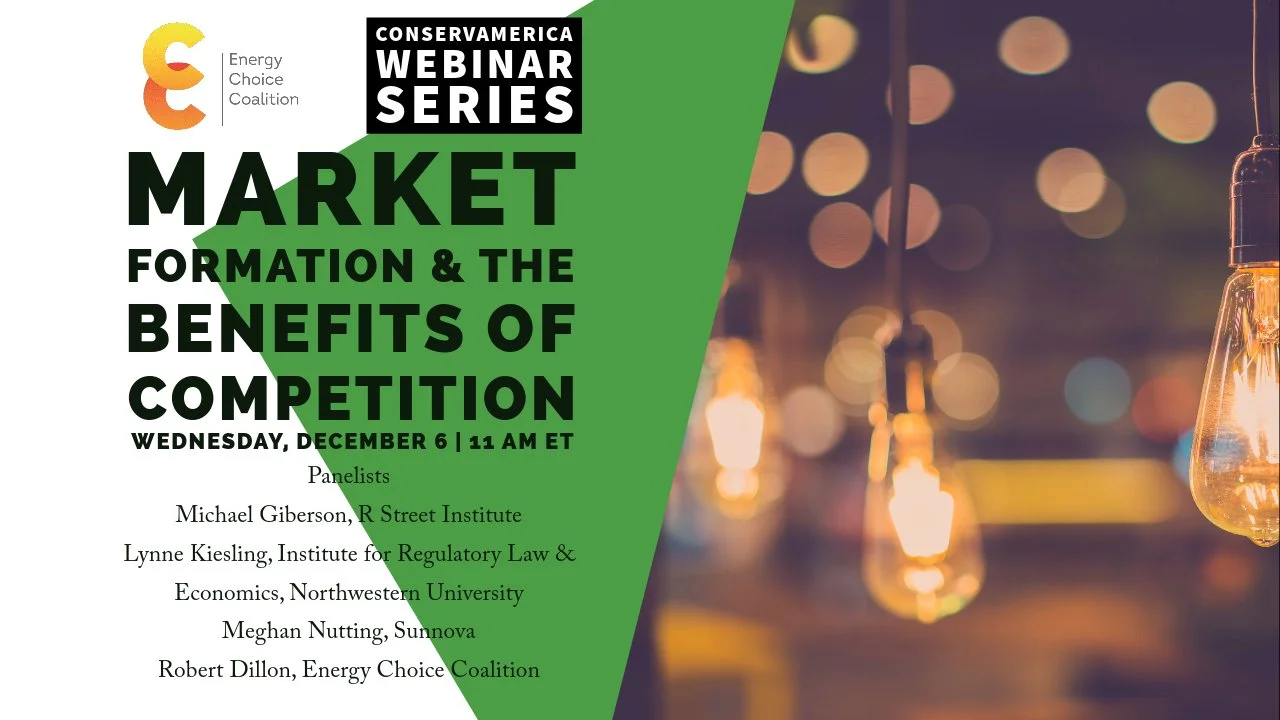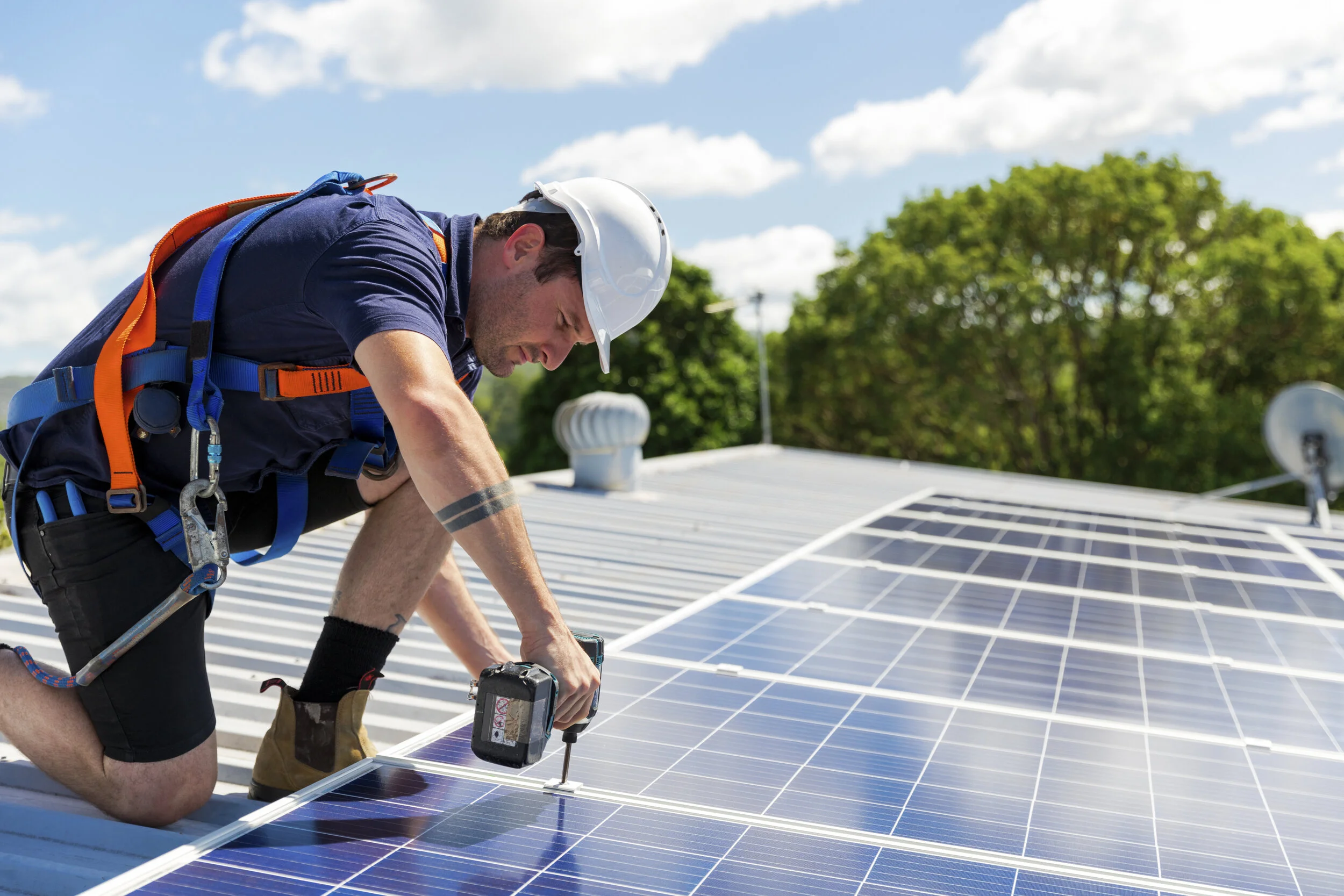Recent polling demonstrates that a majority of Americans believe competitive markets are more effective at lowering consumer energy costs than energy monopolies. Additionally, Americans see competitive markets as the best vehicle to promoting technological innovation, maximizing energy efficiency, ensuring energy reliability and reducing carbon emissions.
Senate Advances Clean Energy Tax Package in Recognition of Importance of Storage and Investment Incentives
The Senate Finance Committee this week highlighted the important role of energy storage in achieving the transition to a zero-carbon power sector with the advancement of a $259.5 billion clean energy package that includes tax incentives for stand-alone storage and combined solar and storage projects.
The Clean Energy for America Act by Oregon Democrat Sen. Ron Wyden seeks to streamline the tax code to make clean energy tax credits more accessible and effective. The Wyden package differs from President Biden’s American Jobs Plan, which also included an investment tax credit for storage, in that it would replace the current patchwork of 40 clean energy credits with three categories of technology neutral incentives for zero-emission generation.
Forcing Solar Installers to Unionize will Increase the Cost of Clean Power for Consumers
With the White House focused on a massive infrastructure package, Americans are likely to see a rapid uptick in the development of clean energy. Ideally, that would provide consumers even more opportunities to choose their energy sources.
President Joe Biden’s infrastructure plan would increase the availability of renewables, outpacing the current rate of more than 20 percent of all U.S. electricity generated in 2020, and create job opportunities.
The Grand Technological Shift of the Power Sector & How Free Electricity Markets Are Best Poised to Capture Them
Technological innovation and the rapid pace of change offered via digital technologies and the Internet of Things (IoT) is prompting wide-scale shifts across the economy. These transformative technologies weren’t created by or exclusively for the utility industry, but their wide availability and rapidly falling costs have allowed them to be applied in the production, delivery and management of electricity. For utility customers, that means a movement toward dispatchable energy resources (DERs), demand-side management, smart grids, and other innovative products and services.
The Utility Playbook of Bad Behavior
The Conservative Energy Network (CEN) have launched UtilityPlaybook.com to track the ways monopoly utilities use their influence and power to block competition and maintain outdated fossil fuel and nuclear power plants. The new website also includes some of the great work being done at the nonprofit Energy and Policy Institute to track corruption and dirty tricks by incumbent utilities – moves that are slowing the transition to a clean energy future while charging ratepayers full freight for dirty energy.
Free Economies are Clean Economies
Advocating for economic freedom and free enterprise to improve human and environmental conditions, Nick Loris’ policy paper explains how innovation and competition will solve climate change’s most difficult challenges. Rather than harmful regulations and excessive spending proposals like the Green New Deal, Loris outlines how capitalism is not the problem, but the solution.
The paper, “Free Economies are Clean Economies,” investigates and analyzes the correlation between economic freedom, limited government, open markets, private property rights, and environmental performance around the world.
New(ish) Publications Worth Your Time
One of our favorite new newsletters on Substack is David Robert’s Volts. David writes about the intersection of clean energy, climate change and politics in a way that makes a complicated subject accessible to the reader. Face it, most people don’t think much about the electricity system. They flip the light switch and if the lights come on, they are happy. David often goes deep into the technical side of the power system and new technologies. Take, for example, David’s writing earlier this year on transmission where he gets into the weeds about why it’s so difficult to build new transmission infrastructure and why it’s so necessary for the energy transition. If you’re into electricity policy, Volts is definitely worth your time.
Solar Industry Jobs Report
The Solar Foundation released its annual National Solar Jobs Census report this week, projecting the solar industry will need to add 900,000 workers to meet President Joe Biden's 2035 clean energy goals.
Despite the effects of the pandemic on the U.S. economy, the solar industry’s strong start in 2020 through February and ability to adapt to market demands yielded more success than anticipated from a year plagued by supply issues and economic uncertainty. While the 231,474 workers employed by the solar industry is down 6.7 percent from the year prior, competition in 2020 produced higher labor productivity, increased diversity in the industry, generated greater consumer interest after a year of stay-at-home orders and manufactured a record 19.2 GWdc installations. Despite the positives, the report projects the industry will grow to only 400,000 jobs by 2030, leaving a gap of 500,000 additional jobs needed if President Biden’s policy to decarbonize the electricity sector by 2035 is to be successful.
Report Finds Regulation and Utility Practices Biggest Barriers to Solar Adoption in New York
The biggest barriers to expanding clean solar energy production for New Yorkers are regulatory barriers and the need to increase compensation for distributed solar generation, according to a report released this month by the New York Solar Energy Industries Association (NYSEIA).
Conservative Energy Network Launches Utility Playbook to Track Monopoly Abuses
Our friends over at the Conservative Energy Network (CEN) have launched UtilityPlaybook.com to track the ways monopoly utilities use their influence and power to block competition and maintain outdated fossil fuel and nuclear power plants. The new website also includes some of the great work being done at the nonprofit Energy and Policy Institute to track corruption and dirty tricks by incumbent utilities – moves that are slowing the transition to a clean energy future while charging ratepayers full freight for dirty energy.
Clean Virginia and the Vampire Squid
A picture is worth a thousand words; political cartoons are worth a million
We love cartoons. We have been publishing the acerbic visual commentary of Kenneth Catalino for years. We were recently introduced to the political cartoons of J.D. Crowe in Alabama’s AL.com who has long been documenting political corruption in Alabama. Crowe most recently has been targeting the sharp end of his ink pen at Alabama Power and its plan to bury legacy coal ash storage ponds at ratepayers’ expense.
Energy & Policy Institute: Investor-owned utilities falling short on decarbonization goals
A review of publicly available data by the nonprofit The Energy and Policy Institute finds that investor utilities are failing to align their businesses with the Paris climate agreement goals and investors’ expectations, according to a new scorecard of major emitting companies. The Climate Action 100+ Net-Zero Company Benchmark assesses the climate plans and performance of 159 large companies.
GAO Report, Anecdotes from Texas Demonstrate Value of Distributed Energy Resources in Addressing Peak-Demand Periods
By all accounts, the recent winter storms that resulted in an energy crisis for millions of people across Texas is an indication, not the exception, of future weather events that have the ability to endanger power systems.
The Government Accountability Office (GAO) recently released a new report entitled Electricity Grid Resilience and testified before the Senate Committee on Environment and Public Works on its findings.
“New technologies provide utilities with additional options for meeting demand and providing reliable service. These options include variable energy resources, smart grid technologies, and energy storage,” the report explains. “Many of these options are relatively inexpensive and fast to deploy, especially compared with constructing large, conventional power plants. In addition, new technologies within the system are increasingly available for use by customers and can enable more flexible operations.”
That flexibility can be provided through Distributed Energy Resources (DERs), which can refer to both physical and virtual assets integrated into an electric grid and used individually or in aggregate to provide supplementary power to the grid, individual customers, or both. DERs have frustrated incumbent utilities that believe they present management issues, but the opposite is actually true —these resources can make the difference in a crisis.
The value of rooftop solar played out in real-time during last month’s winter storm. Houston homeowners who had invested in rooftop solar were able to enjoy uninterrupted power, despite the shutdown of the region’s power system.
R Street Scholar Exposes Bad Math in WSJ Attack on Competitive Markets
We’ve already talked previously about all the things the Wall Street Journal and others got wrong about the blackouts in Texas, but Josiah Neeley over at R Street did a useful deep dive into the WSJ’s assessment that deregulated Texas residential consumers paid $28 billion more for their power since 2004 than they would have paid at the rates charged to the customers of the state’s traditional utilities and that retail choice customers paid $19.2 billion more from 2010 through 2019 than they would have if they’d stuck with their incumbent utility.
Neeley points to the peer-reviewed 2018 report from the Baker Institute which found that electricity rates in competitive market states have generally fallen in recent years, while rates in monopoly utility states tended to increase or remain flat. Texas, which has the most liberalized power market in the country, in particular has seen significant declines.
Sustainable Energy Factbook Shows Clean Energy Met 40% of Demand in 2020
The new edition of the factbook details how clean energy faired during the COVID-19 Pandemic last year, and the results showed the U.S. clean energy sector to be resilient, even in the face of the nationwide closures and economic downturn.
A few of the top-line findings from the factbook include the 7.8 percent drop in U.S. primary energy use, which was the highest year-on-year decline in U.S. energy consumption in at least 30 years. The massive energy decline came as the entire U.S. economy contracted 3.5 percent in 2020.
Coalition Letter Urges Congress to Expand Competition in Wholesale Electricity Markets
As Congress considers policy solutions to address this most recent energy reliability crisis – while simultaneously working to jumpstart our economic recovery – we urge members to utilize all available levers to promote economic growth, grid reliability, job creation, climate solutions, and innovations that can lower electricity costs for the nation’s consumers.
Increasing access to data regarding electricity consumption and emissions for retail electricity suppliers would make it easier for customers to manage their energy usage and for system managers to deploy demand-side technologies, such as demand response and storage, to strengthen reliability. The full text of the letter is available here.
Reducing regulatory soft costs to hasten the clean energy transition
According to PV Magazine, over 50 million single-family homeowners in the United States want to install solar panels. That number has increased by 13 percent since the beginning of the pandemic in March 2020. The good news is that the cost of installing solar panels has dropped by 89 percent over the past 10 years. The bad news is that all the other costs – customer acquisition, permitting, inspection, connecting to the grid, installation, taxation, and system financing – have not.
These “soft costs” are an unnecessary impediment to consumers and solar companies. Solar panels are just 10 percent of the cost of a residential solar system. Yet, buyers pay significantly more than homeowners in other parts of the world due to the "soft costs" of permitting. In Australia, for example, where one in five homes has a solar energy component, consumers pay between $1.10 and $1.20 a watt, and it takes just one to three weeks to get that system installed.
Solar industry says Dominion rate case would undermine South Carolina’s Energy Freedom Act
The Energy Freedom Act requires South Carolina utilities to file net-metering successor plans that avoid cost shifts and provide long-term stability for solar customers. Dominion’s filing would add grid access charges, a monthly subscription cost for solar customers, and a low export rate for net metering customers that would unnecessarily inflate solar costs and devalue these investments.
Solar industry hopes Biden DOJ defense of Trump tariffs is only temporary setback
The solar industry has long opposed efforts to impose tariffs on imported solar panels and hoped the incoming Biden administration would reverse a Trump-era decision that increased tariffs on solar panels and rescinded an exclusion for two-side solar panels. That hope took a hit this week when the Justice Department (DOJ) called for the U.S. Court of International Trade to dismiss an industry complaint against the October Trump proclamation.
DOJ wrote in its filing to the court that the solar industry’s argument “fails to set forth a plausible showing that [President Trump’s] determination involves a clear misconstruction of the governing statute, a significant procedural violation, or action outside delegated authority.”


















